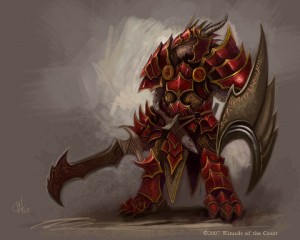While the Dungeon’s Master team enjoys some well-deserved vacation time, we’re breaking out the greatest hits and shining a spotlight on a few of our favourite articles from 2011. We’ve searched for hidden gems that our newer readers might have missed and our long-time readers will enjoy reading again. Enjoy a second look at these greatest hits from Dungeon’s Master.
Excluding monsters, there are 36 playable races in 4e D&D (so far). Each race brings something unique to the character creation equation. Although a character of any race can become any class, there are obviously some that are more suited than others based on racial bonuses. But even with the choices narrowed down, it’s still unusual to have any two PCs in a party be the same race or even the same class. That’s just the way D&D works. And I for one have absolutely no issues with it.
The challenge with this kind of multiculturalism is coming up with a plausible reason that explains how and why these characters ever came together in the first place. It’s easy to accept the foundations of the fantasy setting in the context of the game, but beyond the high level elements, players still expect a certain level of realism and want things to make sense even in a wondrous setting. Yet time after time we just accept (albeit begrudgingly) that this band of misfits we call a party found common purpose and have become fast friends.
One of the best ways to overcome the “why are we in the same adventuring party?” problem is to find some commonality. Making everyone play the same race is probably the easiest way to accomplish this. As much as I hate to restrict anyone’s options during character creation, a party of the same race does present some immediate benefits, the first and most obvious of which is finding motive to be together.
When the party is made up entirely of just one race there are plenty of ways to create a shared background between some of all of the characters. It also gives the players a chance to look at the racial powers and feats and see if there are ways to try something that they might not be able to if there weren’t other members of the same race in their party.
When Lair Assault offered Glory for a party of the same race that completed the adventure I expected to see a lot of same-race parties. Of the 15+ games I watched or played in, I never saw a single party where the PCs were all the same race. I saw a few parties with four Dwarves or four Genasi, but never the full five. I guess that no matter how appealing you make it, unless the DM puts his foot down, people will exercise their freedom of choice and make the character they want, race be damned. Oh well, their loss.
